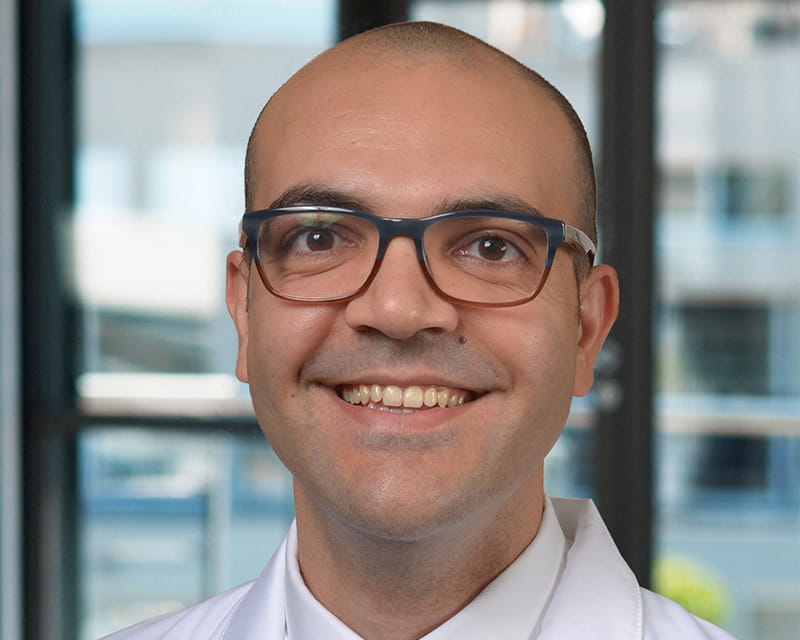
The Ohio State University Wexner Medical Center expands treatment options for patients with COPD

Kymberly Gowdy, MS, PhD
Associate Professor, Division of Pulmonary, Critical Care and Sleep Medicine
Researchers at The Ohio State University Wexner Medical Center have received a $2.78 million grant from the National Institute of Environmental Health Sciences (NIEHS) to study whether consumption of certain fatty acids suppresses pulmonary inflammation following ozone exposure.
This is the second time in three years that principal investigator Kymberly Gowdy, MS, PhD, has received an R01 grant to support her research on ozone-induced lung injury. Findings from these active studies may pave the way for novel therapeutics that help mitigate the harmful effects of ground-level ozone.
Although many studies have linked increases in ambient ozone levels to acute and long-term health problems, scientists are still trying to identify the molecular mechanisms that trigger pulmonary inflammation – or help suppress it.
“We know that people who live in more polluted areas have a higher risk of respiratory problems associated with chronic lung diseases such as asthma or COPD, and they have a higher incidence of respiratory infections,” says Dr. Gowdy, an associate professor in Ohio State’s Division of Pulmonary, Critical Care and Sleep Medicine. “However, until we understand how air pollution alters susceptibility to lung inflammation and infection, we can’t develop targeted interventions to lessen these complications.”
Dr. Gowdy adds that, with more than a third of the U.S. population living in areas that exceed current ozone regulatory standards, the need for therapeutics to combat the health effects noted after increases in ambient levels is critical.
In her new NIEHS-funded study, which launched in June 2020, Dr. Gowdy and her colleagues are using mouse models to examine whether dietary docosahexaenoic acid (DHA) – an omega-3 polyunsaturated fatty acid – can influence the immune response to ozone.
A pivotal epidemiological study conducted at New York University found that adherence to a Mediterranean diet, which is rich in antioxidant compounds and omega-3 polyunsaturated fatty acids, reduced mortality risk associated with long-term exposure to air pollutants including ozone. And previous research published by a team of scientists including Dr. Gowdy (Toxicological Sciences, June 2018) indicated that ozone-induced lung injury is associated with a decrease in DHA-derived lipid mediators – meaning dietary DHA supplementation may be an innovative way to prevent inflammation caused by air pollutants.
“Our preliminary data suggest DHA suppresses ozone-induced pulmonary inflammation by producing specialized pro-resolving lipid mediators and by altering macrophage function in the lung,” Dr. Gowdy says. “If we can confirm that DHA modifies susceptibility to ozone, it may provide the scientific rationale we need to test DHA supplementation in human clinical trials. It’s exciting to think we could ease the health burden of air pollution through dietary changes.”
Dr. Gowdy is also in the third year of a $3.5 million R01 grant that she brought to Ohio State from her previous position at East Carolina University. In collaboration with researchers from Duke University, she is investigating whether scavenger receptors are modulated during ozone exposure – and whether this predisposes the lung to infection.
“We know macrophages play a key role in killing infectious lung pathogens, and that the scavenger receptor CD163 is expressed on macrophages and monocytes,” she says. “But we haven’t linked the molecular pathways that are modified by environmental pollutants to the pathways that influence host-pathogen interactions. This would help us understand the mechanisms that underlie respiratory pathogen susceptibility and lay the groundwork for a novel molecular pathway that could be targeted with therapeutics.”
This study, which incorporates mouse models and human bronchoalveolar lavage samples, builds off the team’s previous discovery that CD163 is a critical regulator of cell-free hemoglobin (CFH) levels in the lung. Excess CFH has been shown to decrease macrophage phagocytosis and efferocytosis. To that end, the team aims to show whether CD163 mediates macrophage-dependent clearance of CFH, limiting acute lung injury after ozone exposure.
“The link between air pollutants and exacerbation of chronic lung disease is well-studied, but few researchers have looked at ozone-induced lung injury in the context of infection,” Dr. Gowdy explains. “When there are higher ambient levels of ozone in the air, people infected with influenza, pneumonia or possibly COVID-19 are more likely to have severe symptoms. We need to learn how to alleviate this susceptibility to infection, because air pollution and respiratory infections are not going away.”
Dr. Gowdy says she hopes her research will help physicians and patients appreciate how the environment can influence disease.
“Our hope is to develop interventions that reduce or prevent ozone-induced lung injury,” she says. “In the meantime, it’s important for people to understand the impact of air pollution on their health and learn that when air quality is considered unhealthy, it has the potential to impact respiratory and cardiovascular function.”
Learn more about innovations in care and research from the Division of Pulmonary, Critical Care and Sleep Medicine.